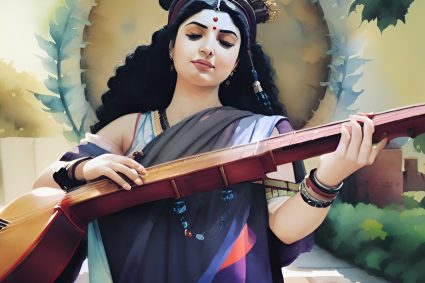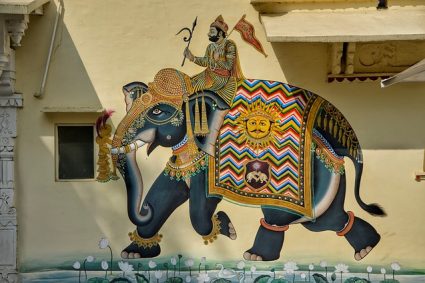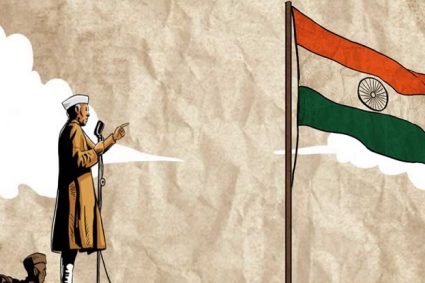
India, a vast and diverse subcontinent, is a treasure trove of cultures, traditions, languages, and customs. With over 1.3 billion people belonging to various ethnicities and practicing different religions, India epitomizes the concept of “Unity in Diversity.” This phrase encapsulates the unique ability of this nation to thrive and prosper despite its heterogeneous nature. Unraveling India’s cultural mosaic reveals the intricate interplay of myriad cultural threads that bind its people together in a harmonious tapestry.
Written by Subhendu Kumar Mishra, Assistant Professor, CUTM
Historical Background: A Mosaic of Influences
India’s cultural tapestry has been woven through millennia of history, shaped by a multitude of influences from various invasions, migrations, and trade routes. The land’s rich heritage can be traced back to the ancient Indus Valley Civilization, where the seeds of cultural diversity were sown. Subsequent waves of migration, including the Aryans, Persians, Greeks, and Central Asians, added their unique contributions to the cultural canvas.
Over the centuries, India witnessed the rise and fall of empires, including the Mauryas, Guptas, Mughals, and numerous regional kingdoms. Each dynasty brought forth its own customs, architectural styles, and artistic expressions, further enriching the nation’s cultural tapestry.
Linguistic Diversity: A Tower of Babel
India is a linguistic marvel, boasting 22 officially recognized languages and hundreds of dialects. The Constitution of India recognizes Hindi as the official language of the Union, but it also acknowledges the importance of preserving linguistic diversity by granting official status to various regional languages. Each state, or sometimes even smaller regions within states, has its own official language, fostering a sense of cultural identity and pride among its speakers.
The diversity of languages in India creates an intricate web of communication, where multilingualism is common among its people. This linguistic diversity is a testament to India’s rich heritage, reflecting the coexistence of different cultures across the nation.
Religious Harmony: The Unity of Faiths
India is a melting pot of religions, with Hinduism, Islam, Christianity, Sikhism, Buddhism, Jainism, and several other faiths flourishing side by side. Religious coexistence is deeply ingrained in the Indian ethos, and the country is known for its religious harmony.
Places like Varanasi, a city sacred to Hindus, and Amritsar, home to the Golden Temple, stand as symbols of religious pluralism, where devotees from various faiths come together to seek solace and spiritual enlightenment. Festivals like Diwali, Eid, Christmas, and Guru Nanak Jayanti are celebrated with enthusiasm and fervor across the nation, transcending religious boundaries.
Festivals: A Riot of Colors and Celebrations
India’s calendar is dotted with a myriad of festivals, each reflecting the cultural ethos of its region. From the kite-flying festival of Uttarayan in Gujarat to the vibrant Durga Puja in West Bengal, and from the snake boat races of Kerala to the camel fair in Rajasthan, every festival showcases the unique traditions and rituals of its locality.
The festive spirit of India is a unifying force, bringing people together to celebrate joyously, irrespective of their backgrounds. During festivals, traditional attire, music, dance, and food take center stage, fostering a sense of belongingness and camaraderie among its people.
Cuisine: A Gastronomic Delight
India’s culinary diversity is a testament to its cultural richness. Each region boasts a unique cuisine, characterized by its distinct flavors, spices, and cooking techniques. From the spicy curries of the South to the delectable sweets of the North, Indian cuisine is a gastronomic journey that tantalizes taste buds and unites people through a shared love for food.
The concept of “unity in diversity” is beautifully exemplified in Indian kitchens, where various regional dishes are prepared and relished with equal enthusiasm by people from different backgrounds.
Arts and Crafts: Weaving Tales of Creativity
Indian arts and crafts showcase the creativity and skill of its artisans, with each region boasting its distinctive art forms. From the intricate Pashmina shawls of Kashmir to the colorful Warli paintings of Maharashtra, and from the delicate embroidery of Lucknow to the splendid brasswork of Moradabad, Indian craftsmanship is a reflection of its diverse cultural heritage.
Artistic expressions through music, dance, and theater also play a significant role in preserving and promoting cultural diversity. Classical dance forms like Bharatanatyam, Kathak, Odissi, and Kathakali mesmerize audiences with their grace and storytelling.
India’s cultural mosaic is a breathtaking kaleidoscope that captivates the world with its diversity and splendor. The coexistence of multiple cultures, languages, religions, and traditions under one national identity is a testament to the resilience and inclusiveness of its people.
The concept of “Unity in Diversity” lies at the core of India’s cultural fabric, creating a sense of oneness among its people despite their differences. This unifying force has been a source of strength throughout history, empowering the nation to progress and thrive as one of the world’s oldest civilizations.
As India embraces the challenges and opportunities of the modern world, its rich cultural heritage continues to be a source of inspiration and pride. The ability to cherish and celebrate diversity while remaining united in spirit makes India a beacon of hope for a harmonious global community.
The cultural mosaic of India stands as a timeless reminder that when diverse cultures come together, they create a tapestry of beauty and strength—a testament to the enduring power of unity in diversity.





















